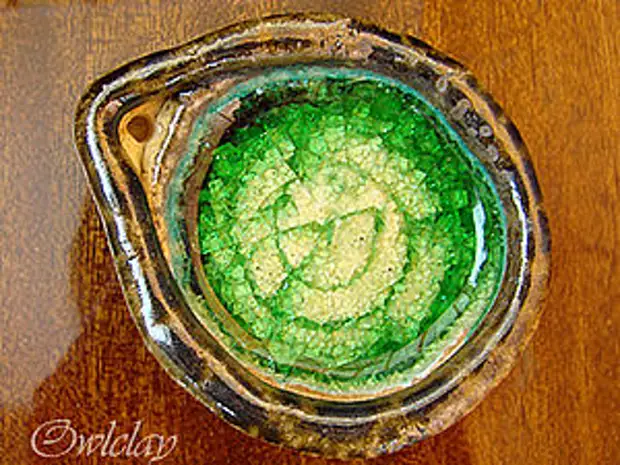
Once, in my childhood, in order to get money for ice cream, there was an easy way to go to the point of delivery glass bottles from a kefir, beer, wines; White, green, brown ... In short, which will come out. Since then, many years have passed and I do not know if there are such points of delivery, and I simply throw out the bottles. Rather, throwing out. It turned out that empty bottles can become an excellent material for decorating ceramics. This technique has a certain name, but this does not reduce its advantages: it is very simple and extremely effect. Conditionally let's call this technique "Inlaid with glass". Even a novice ceramist will easily create this technique.
I want to suggest everyone with me to blind here such a fort for fragrant sticks. Special charm this product gives krakle (grid of small cracks) on the surface of the glass.
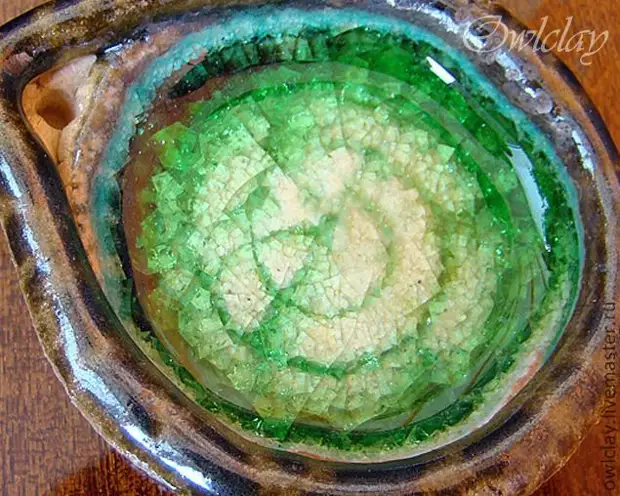
So, proceed.
IMPORTANT! We work with broken glass. Be very careful, in order not to hurt!
To create another masterpiece we will need:
The first is the surface on which we will work - a gypsum board, or a piece of plywood, or a piece of tight fabric. The table with plastic coating is not very suitable, because Clay, most likely heins him.
Second - piece of chamot. It is very common and very patient clay mass. She patiently allows you to mock yourself to any newcomer in ceramics. For example, I used a conventional cream shame. Porcelain and Faience for this technique are not suitable because of their fragility.
The third is a few bottled fragments. The main colors that use for this technique is transparent, green, brown-green, brown and blue. Red I use very rarely, because Red glass occurs infrequently. Most often it is a simple glass covered with film or paint. And it means that when the desired effect does not work.
The fourth is a simple brush.
Fifth - Shlice (liquid clay). The slip is very simple: in a small container in water, dissolve a piece of clay, from which we are going to sculpt.
Sixth - muffle furnace, in which you will need to burn our product. The roasting temperature is 1200 degrees.
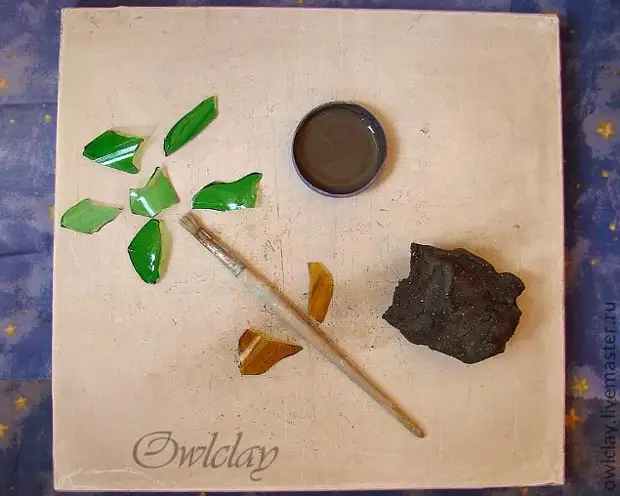
The technique of modeling, in which we will work, is called "Miscellane".
We take a piece of cream shamot. You say: "What is he cream? !! He is almost black! " Do not worry, after firing, the shame will become light, almost white. Many clays love to fool newcomers, unexpectedly changing the color when firing.
So, we take a piece of chamot and roll it up with both hands on the working surface. It turns out long sausage or harness.
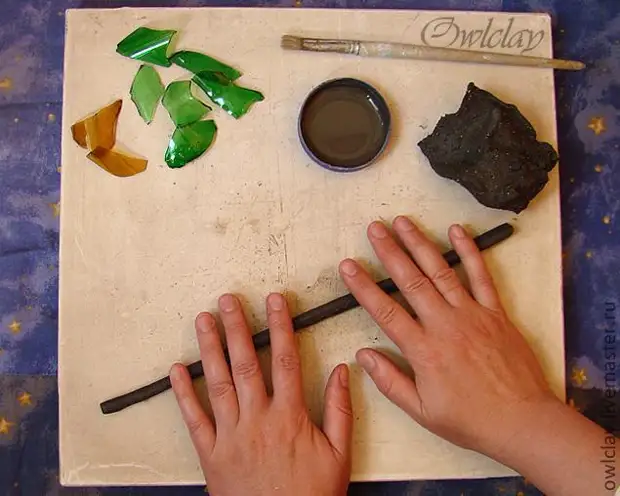
While she did not start to push, and, therefore, and break, twist the spiral from it. So it turns out the bottom for our stand.
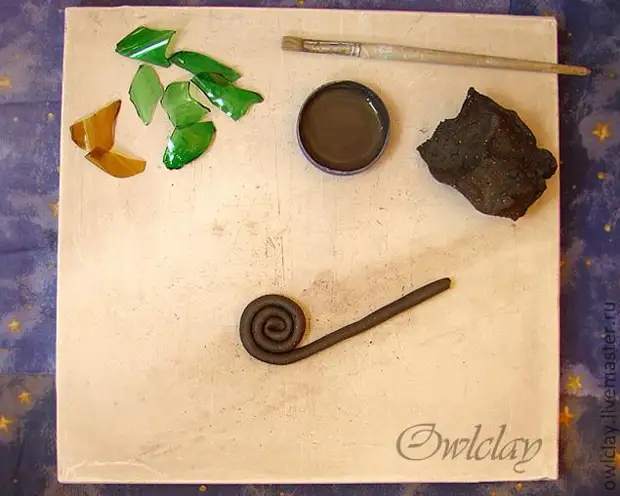
Rather another sausage. From it we are glady the side walls of the product.
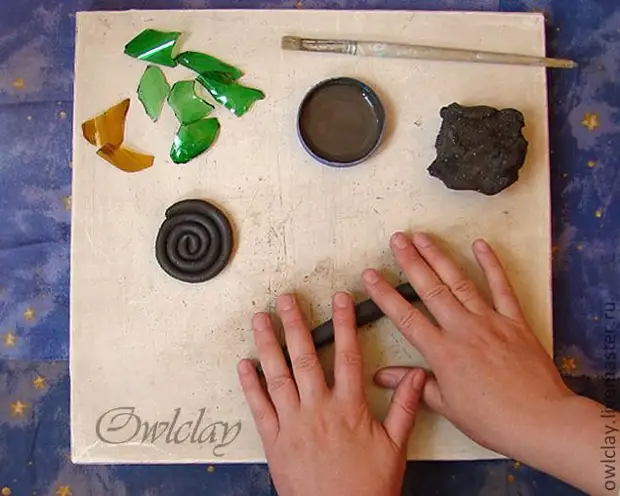
Macaus tassel in the slip and apply it to the place of splicing of two sausages. Finger smooth the connection location. Ideally, when parts of the clay are connected to each other, the sharp object is applied to the location of the connection, then lubricated with a slip and press the parts of the product to each other.
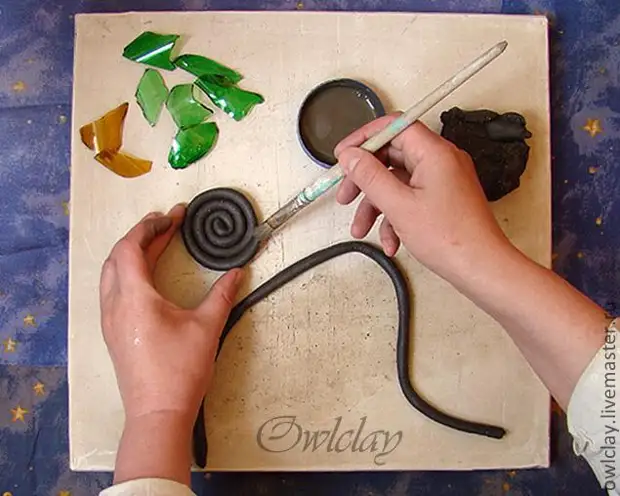
We give the product a shape of a small bang and do not forget to provide a hole where the fragrant stick will be inserted.
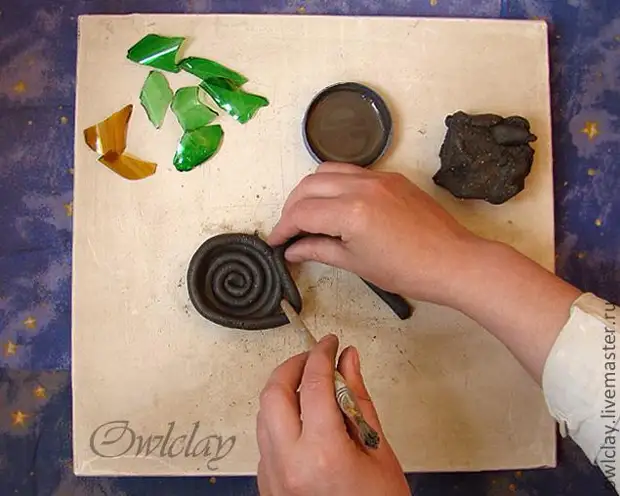
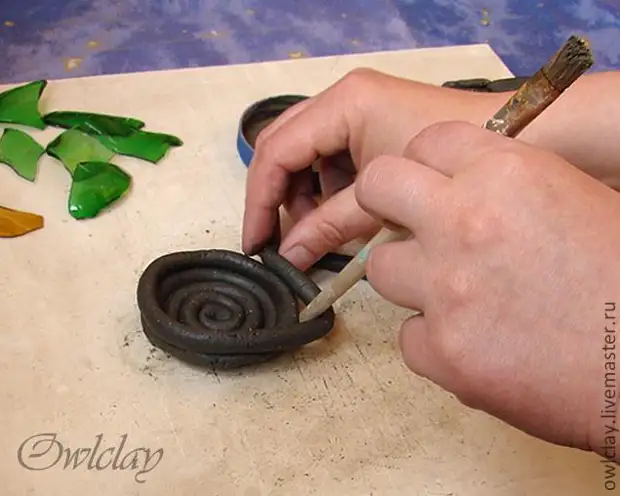
It turns out such a stand.
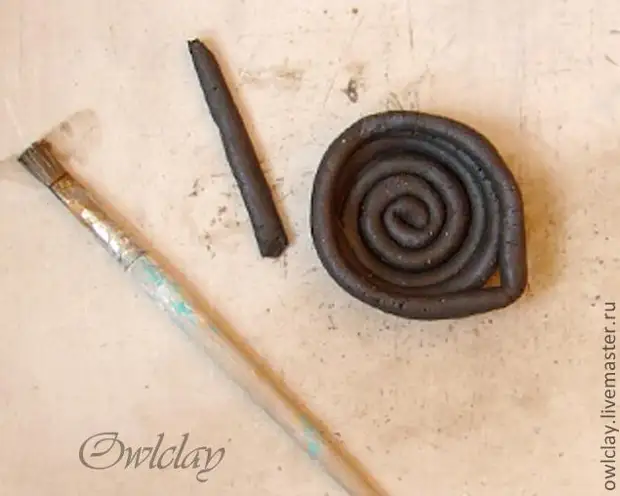
At the final stage, we will need to burn our product, which means that it is necessary to legish all the gaps, otherwise the molten glass can be found through them and spoil the stove.
I decided to do it outside the product. I turn over the stand upside down, roll a thin flagery from clay and begin to legitture all the recesses and cracks on the surface. You can do it with a finger or a stick - to whom it is more convenient. If the product quickly dries, you can slightly lubricate it with a slip.
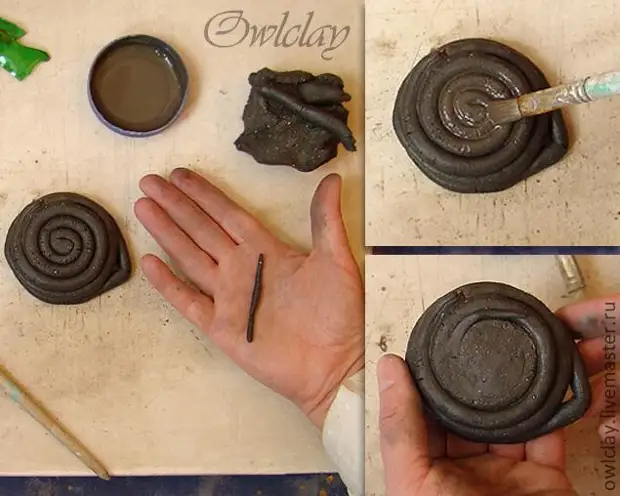
So, the bottom is legally.
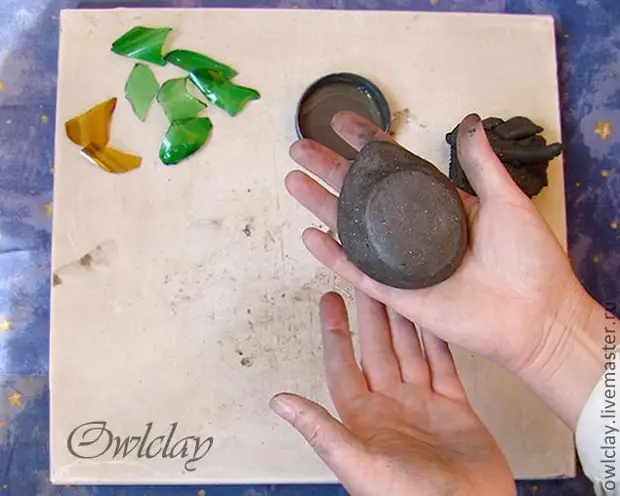
While the product is still raw, in the bottom we press the pieces of broken glass. Caution! Do not drive through and do not get closer!
I decided to use only green fragments. For consumer decorative effect, a high-temperature glaze can be applied to the edge of the station (we will burn the product at a very high temperature!) Beloved color. If the glaze accidentally crossed the product to the bottom, it is necessary to erase with a damp cloth. Otherwise, when firing, the product tightly sticks to the stove.
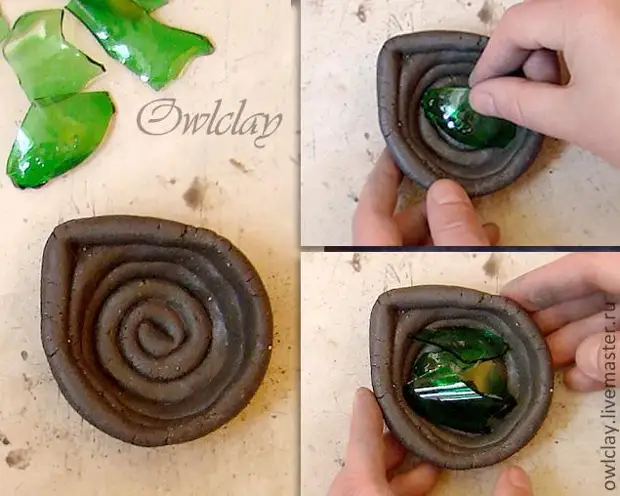
If we are satisfied with the design of the product, we leave it for a couple of days to dry. It is desirable on the surface absorbing moisture: wooden or cardboard. You need to know that the drying clay does not like batteries and drafts. Good clay products dry in a cardboard box.
The dried cream shape becomes light gray.
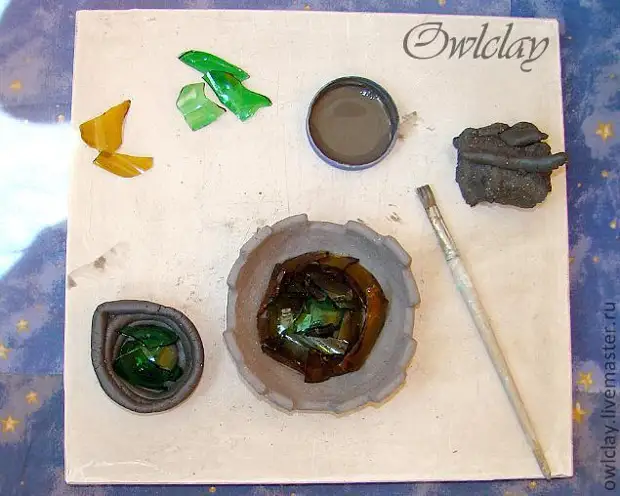
Fully dried product burn in a muffle furnace at a temperature of 1200 degrees. During the firing, the product from the chamot becomes very durable, and the glass goes into a liquid state and, like water, spreads along the bottom, forming a flat surface. After cooling on the surface of the glass, crane is formed.
If for the first time it was not possible to put the right amount of glass, and at the bottom of the coaching was formalized, not trouble. Add another piece of glass and repeat the root.
But what happened after the firing.
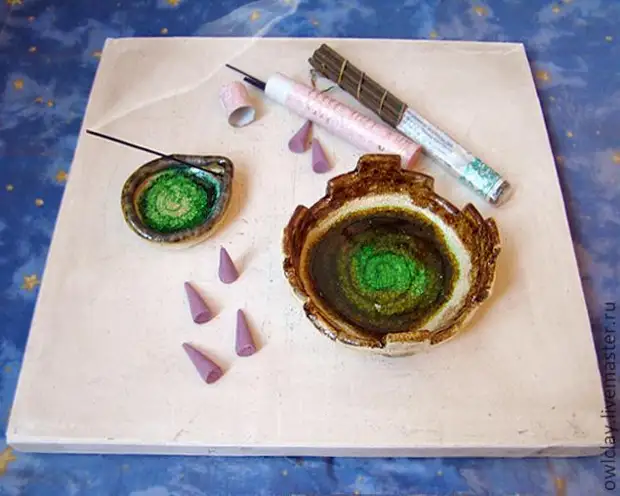
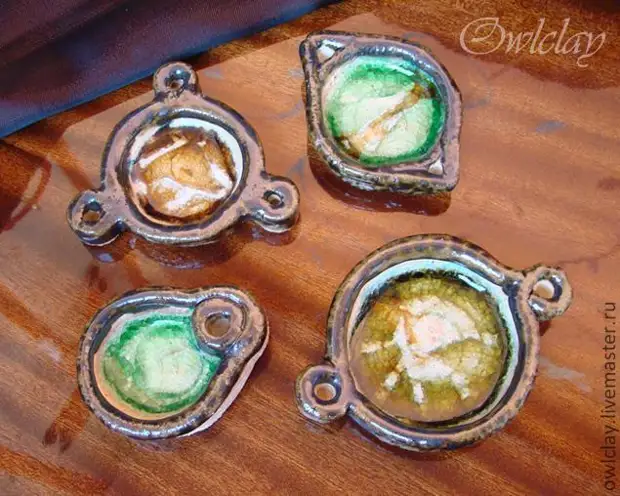
You can mix and combine pieces of multicolored glass in various ways, getting all new and new effects. Alternatively, at the stage of modeling, the product is made from clay a low septum - it turns out cells. In each of them put the glass of a certain color. Thus, it turns out a clear drawing resembling a mosaic or inlay.
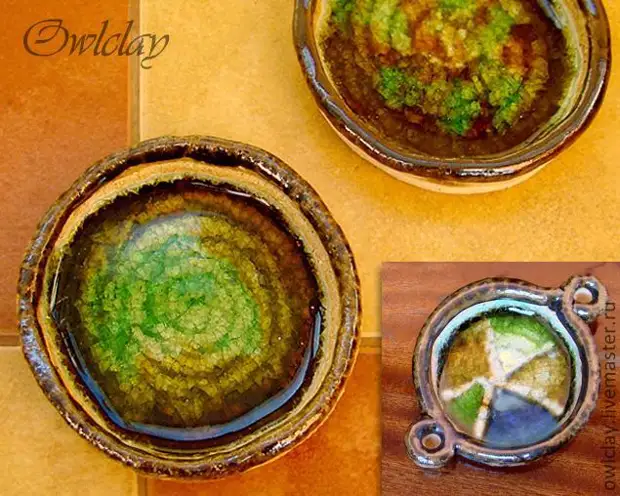
A source
